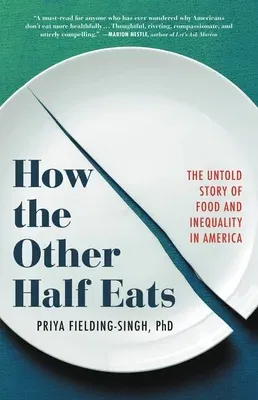This important book "weaves lyrical storytelling and fascinating
research into a compelling narrative" (San Francisco Chronicle) to
look at dietary differences along class lines and nutritional
disparities in America, illuminating exactly how inequality starts on
the dinner plate.
Inequality in America manifests in many ways, but perhaps nowhere more
than in how we eat. From her years of field research, sociologist and
ethnographer Priya Fielding-Singh brings us into the kitchens of dozens
of families from varied educational, economic, and ethnoracial
backgrounds to explore how--and why--we eat the way we do. We get to
know four families intimately: the Bakers, a Black family living below
the federal poverty line; the Williamses, a working-class white family
just above it; the Ortegas, a middle-class Latinx family; and the Cains,
an affluent white family.
Whether it's worrying about how far pantry provisions can stretch or
whether there's enough time to get dinner on the table before soccer
practice, all families have unique experiences that reveal their
particular dietary constraints and challenges. By diving into the
nuances of these families' lives, Fielding-Singh lays bare the limits of
efforts narrowly focused on improving families' food access. Instead,
she reveals how being rich or poor in America impacts something even
more fundamental than the food families can afford: these experiences
impact the very meaning of food itself.
Packed with lyrical storytelling and groundbreaking research, as well as
Fielding-Singh's personal experiences with food as a biracial, South
Asian American woman, How the Other Half Eats illuminates exactly how
inequality starts on the dinner plate. Once you've taken a seat at
tables across America, you'll never think about class, food, and public
health the same way again.

